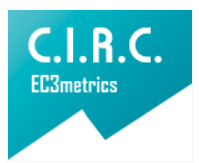Robust analysis of children’ speech and its application in speech therapy
Análisis robusto de voz infantil con aplicación en terapia de voz
Main Article Content
This paper addresses the problem of how to estimate reliable acoustic parameters in children’ speech, as the fundamental frequency and formants in order to develop computer-aided tools
in voice therapy. These two parameters in children’ speech are especially combined making it very difficult the estimation process, to solve this, a corpus with Spanish vowels of 235 healthy
children was acquired for its study and testing with advanced techniques in speech processing. Techniques like linear prediction and homomorphic analysis, and formant normalization, achieves better estimations of these parameters and makes possible the development of computer-aided tools such as presented in this work.
Downloads
Publication Facts
Reviewer profiles N/A
Author statements
Indexed in
- Academic society
- Bogotá: Corporación Universitaria Iberoamericana
- Publisher
- Bogotá: Corporación Universitaria Iberoamericana
Article Details
Bennett, S., (1981). Vowel formant frequency characteristics of preadolescent males and females. Journal of Acoustical Society of America. 69(1), January, 231-238.
Dr. Speech – Speech Therapy, (2010). Herramienta para terapia del habla desarrollada por Tiger DRS. Recuperado en Julio 15, 2010. http://www.drspeech.com/.
Faúndez, M., (2000). Tratamiento digital de voz e imagen. Editorial: Marcombo – Boixareu. Capítulo 2.
Gurlekian, J., Alisei N., & Eleta M., (1999). Caracterización articulatoria de los sonidos vocálicos del español de Buenos Aires mediante
técnicas de resonancia magnética. Laboratorio de investigaciones sensoriales, Hospital de Clínicas - UBA, Argentina.
Houri, K. V., & Ray D. K. (2007). Vowel acoustic space development in children: A Synthesis of Acoustic and Anatomic Data. Journal of Speech, Language, and Hearing Research. December, (50), 1510-1545.
Makhoul, J., (1975). Linear Prediction: A tutorial review. Proceedings IEEE, (63), 561-580.
Ménard, L., Schwartz J., Boë J., & Aubin J., (2007). Articulatory-acoustic relationship during vocal tract growth for French: analysis
of real data simulations with an articulatory model. Journal of Phonetics, (35), 1-19.
Rabiner, L., & Schafer R. W., (1978). Digital Processing of speech signal. New Jersey, Editorial: Prentice Hall.
Rabiner, L., & Schafer R. W., (2007). Introduction to digital speech processing. Santa Barbara, Editorial: The essence of Knowledge.
Rodríguez, W. R., y Lleida E., (2008). PreLingua: una herramienta para el desarrollo del pre-lenguaje. Actas V Jornadas en Tecnologías del Habla. Bilbao, España.
Rodríguez, W. R., y Lleida E., (2009). Formant estimation in children’s speech and its application for a spanish speech therapy tool. Proceedings of the Workshop on Speech and Technologies in Education. Wroxall Abbey Estates, U.K.
Saz, O., Rodríguez W. R., Lleida E., Vaquero C., y Escartín A., (2008). COMUNICA: Plataforma para el desarrollo, distribución
y evaluación de herramientas logopédicas asistidas por ordenador. Actas V Jornadas en Tecnologías del Habla. Bilbao, España.
SpeechViewer III, (1997). Visualizador Fonético desarrollado por IBM. Actualmente sin soporte ni versiones recientes.
White, P,. (1999). Formant frequency analysis of children’s spoken and sung vowels using sweeping fundamental frequency production. Journal of Voice, (13), 14, 570-582.
Whiteside, S. P., (2001). Sex-specific fundamental and formant frequency patterns in a cross-sectional study. Journal of Acoustical Society of America. 110(1), July, 464-478.
Voice Games, (2010). Herramienta para terapia de voz desarrollada por KayPentax. Recuperado en Junio 18, 2010. http://www.kayelemetrics.com
Vox Games, (2010). Herramienta para terapia de voz y habla desarrollada por CTS Informática de Brazil. Recuperado en Julio 15, 2010. http://www.ctsinformatica.com.br












